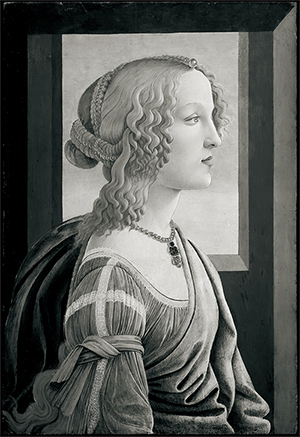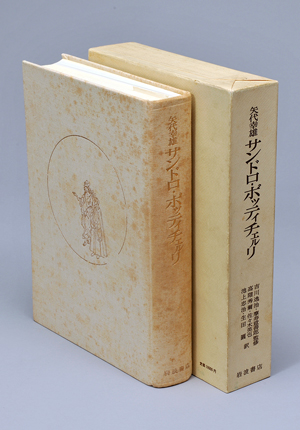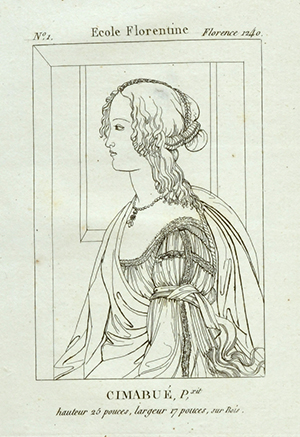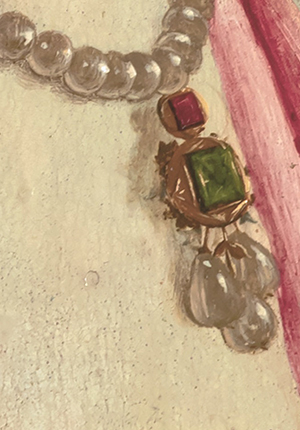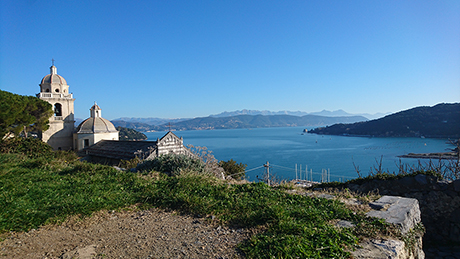
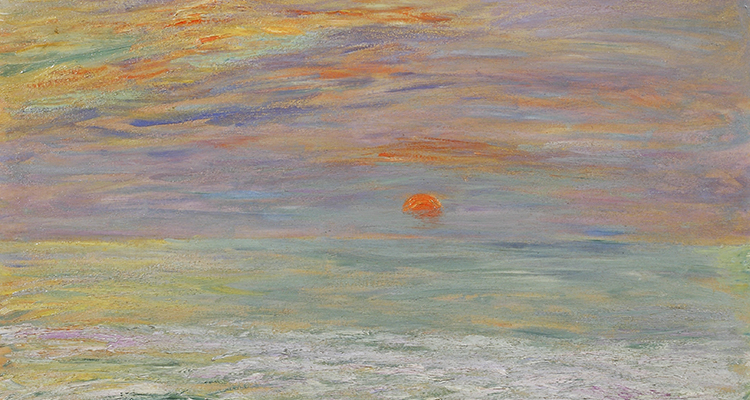
Exhibition
Marubeni Gallery Opening Exhibition III
Botticelli Special Exhibition
La Bella SimonettaDecember 1 (Thu.), 2022 - January 31 (Tue.), 2023

About this Exhibition
This exhibition is the third to be held in commemoration of the opening of Marubeni Gallery and features Botticelli’s La Bella Simonetta. This work, the only tempera painting by the artist currently located in Japan, has been carefully housed by Marubeni in its collection for 53 years since it was imported from the UK in 1969.
The painting found its way to Japan after traveling through Italy, France, Britain, Germany, and then back to Britain. As Botticelli was largely forgotten by history for more than 300 years until his rediscovery in the mid-19th century, there are very few of his works that can be traced back to the early 19th century with documentation, making La Bella Simonetta extremely rare in this respect.
On January 28, 2023, during the exhibition period, we will celebrate the 570th anniversary of Simonetta’s birth. Therefore, in this exhibition, we have tried to reveal the exquisite appeal of both the painting and its model, Simonetta herself, in detail, while tracing the provenance of the painting in chronological order with the aid of the invaluable documentation and through multi-angled investigations.
We sincerely hope that as many people as possible will take this opportunity to closely view and appreciate La Bella Simonetta.
Prominent Works to be Displayed
Simonetta, Florence’s ‘Unparalleled’ Beauty
Sandro Botticelli who painted La Bella Simonetta. was a master of the Renaissance. In the early 1480s he painted his masterpieces, La Primavera; (The Spring) (Uffizi Galleries) and The Birth of Venus (Uffizi Galleries).
Simonetta is said to have inspired Botticelli to create these paintings, she was born in 1453, as a daughter of a wealthy merchant in Genoa, married Marco Vespucci, the cousin of a famous explorer Amerigo Vespucci, and lived in Florence. In 1475, she became a public figure when she was chosen as the “Queen of Beauty" during a jousting match. But soon thereafter, in April 1476, misfortune would cross her life’s path. She was posthumously painted many a time by Botticelli and other painters. Thus was her beauty, considered unparalleled by those of her time, passed on to posterity.
Simonetta's Portrait
At present, there are five other portraits in the world said to be of Simonetta by Botticelli (including workshop works) in addition to the one in the collection of Marubeni Corporation. They are in Frankfurt, Berlin, London, Oxford, and Florence. In this exhibition, three portraits in Tokyo, Frankfurt, and Oxford are compared using panels.
Marubeni Gallery has named the painting, La Bella Simonetta for the following reasons. It is in accordance with the text from the second edition of Sandro Botticelli, the magnum opus by the Japanese art historian Yashiro Yukio, published in 1929.
Tracing the Provenance of La Bella Simonetta
Since La Bella Simonetta was rediscovered in Bologna, Italy, in the early 18th century, it has traveled to a total of five countries–France, Britain, Germany, and back to Britain–before arriving in Japan in 1969, when it was imported from Britain by Marubeni Corporation.
The fact that the provenance of this painting can be traced back so far is significant, as it is quite rare to be able to trace the provenance of any of Botticelli’s works back to the early 19th century (or earlier) and to even have a copperplate reproduction from that period. In this exhibition, such rare books related to the history are also exhibited.
Botticelli's Masterpieces Modeled on Simonetta
Ruskin, an art critic of the late 19th century, and others, however, have said that most of the women in Botticelli’s paintings used the same model, speculating that it might be Simonetta. Indeed, the faces of the women in La Primavera (Spring) and The Birth of Venus, Venus and Mars, they sometimes appear to be depictions of the same woman. Simonetta in the Marubeni collection is the only portrait which might have been depicted during her lifetime, and Simonetta in other paintings seems templatized like cartoon characters. The jewel pendant of the same design worn by La Bella Simonetta in the collection of the Marubeni Corporation is seen repeatedly on the breasts of Simonetta-like women in Botticelli’s paintings.
Place associated with Simonetta
Simonetta’s place of birth has not been identified due to a lack of surviving archival documents. There are currently three theories as to her birthplace: the city of Genoa; the port city of Portovenere to the south of Genoa; and Fezzano, a small seaside town a little north of Portovenere. In this connection, Portovenere means “Port of Venus”. According to Italian legend, Venus, the goddess of love and beauty, was born from the white foam of the waves, appearing one spring day atop a large scallop shell and revealing her glowing naked body above the waves. It is said that this goddess of love first drifted ashore in Portovenere. The entire area is still a hidden tourist spot for romantics today.




